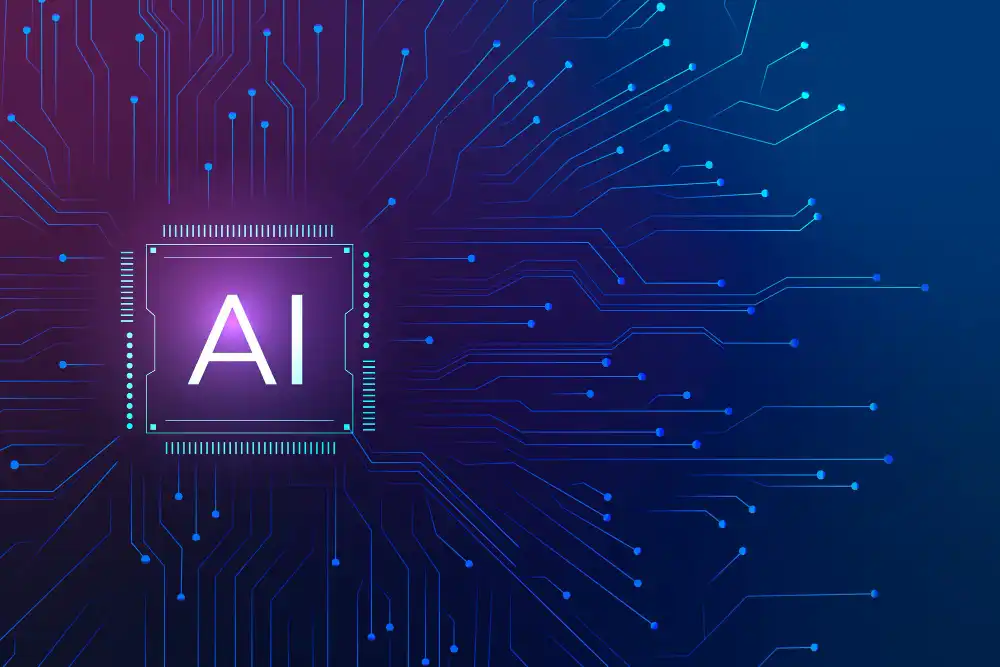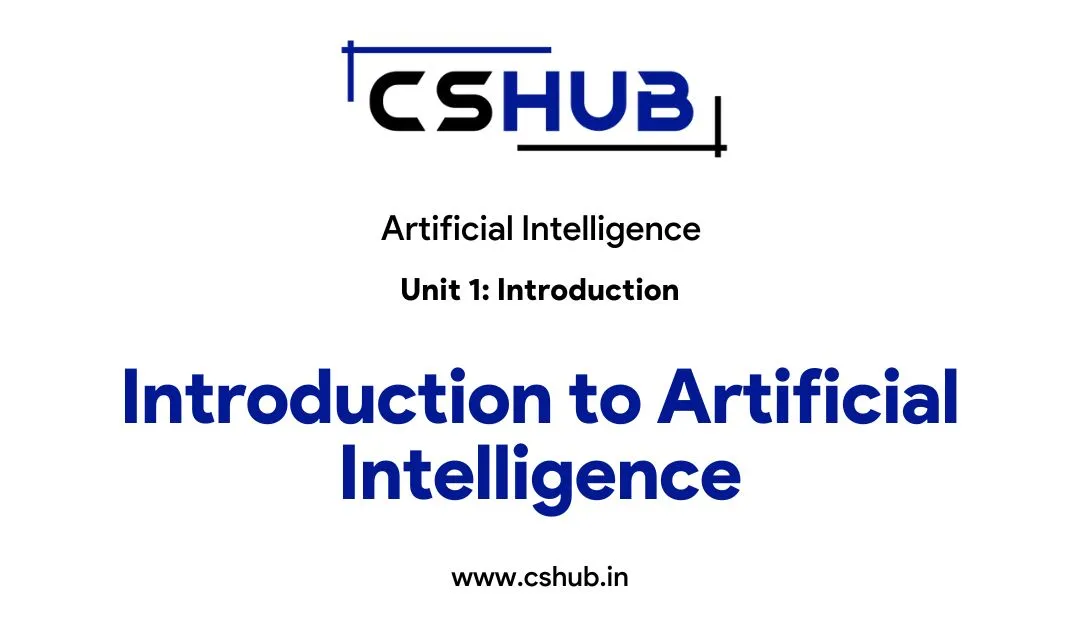What is Artificial Intelligence?
Artificial intelligence or AI is the simulation of human intelligence or emotions in machines, making them respond like humans. In precise words, AI enables a computer, a computer-controlled device, a robot, or software to think and react intelligently like a human being. Artificial intelligence works on the principle of the cognitive powers of a human brain and analyzing them via machines or software. Intelligent software and systems are the outcomes of these studies.
The Future of Artificial Intelligence: Types, History, and Future

Have you considered how machines will cover more than half of industries and professions globally? At some point in time, you may have shown your concern about artificial intelligence, too. Well, that won’t be surprising as many tech giants and startups are working continuously and developing their skills towards this magnificent leap of advancement. Artificial Intelligence is something that’s going to decide the future of humanity significantly in the coming years.
Here, we will dig deeply into the concepts of artificial intelligence and discuss its applications and the future of AI technologies.
Weak AI vs. Strong AI
Artificial Intelligence is generally distinguished into two broad categories: Weak AI and Strong AI. Let’s explore both of these categories in detail:
Weak AI (Narrow AI)
Weak AI refers to AI systems designed to accomplish specified tasks and only capable of performing those tasks. Despite their excellent performance at their assigned tasks, these AI systems lack general intelligence. Voice assistants like Google Assistant, Siri, or Alexa, recommendation algorithms, and image recognition systems are all examples of weak AI. Weak AI works within predetermined boundaries and cannot generalize beyond its specific domain.
Strong AI
Strong AI, often known as general AI, refers to AI systems with human intelligence or even outperforming humans in various tasks. Strong AI would be capable of comprehending, reasoning, learning, and applying information to solve complicated problems like humans do. However, the development of strong AI remains primarily theoretical and has yet to be achieved.
Types of Artificial Intelligence (AI)
Below are the various types of Artificial Intelligence (AI):
Purely Reactive AI
These artificial intelligence types respond to a specific field of work and usually do not have any memory or data to work with. For example, in a chess game, the machine observes the moves of the competitor and makes the best possible decisions to win.
Limited Memory AI
These machines work on the previously collected data and continue adding it to their memory. Despite their limited memory, they can make sound decisions. For example, a machine with little memory can suggest a restaurant based on the already-collected location data.
Theory of Mind
This AI type is proficient enough to understand emotions and thoughts. They can interact socially, too. However, this AI is still in the prototype stage.
Self Aware
Self-aware machines are the upcoming generation of new technologies based on artificial intelligence. They will be intelligent, conscious, and emotionally aware.
Uses of Artificial Intelligence
Artificial intelligence brings many practical applications to a range of industries and domains, such as:
- Healthcare: For medical diagnosis, drug discovery, and predictive analysis of diseases.
- Manufacturing: In quality control, predictive maintenance, and production optimization.
- Marketing: For targeted advertising, sentiment analysis, and customer segmentation.
- Retail: For product recommendations, price optimization, and supply chain management.
- Security: For cybersecurity threat analysis, facial recognition, and intrusion detection.
- Education: For personalized learning, adaptive testing, and intelligent tutoring systems.
- Transportation: For traffic prediction, route optimization, and developing autonomous vehicles.
- Finance: For credit scoring, fraud detection, and financial forecasting.
However, there are numerous potential applications in various domains and industries.
History of AI and How It Has Seen Development Over The Years
Modern artificial intelligence has grabbed significant attention over the years, implying that this concept is nothing new. AI has gone through several different periods, distinguished by whether the focus was on proving logical theorems or trying to study human behaviour via neurology and psychology.
Artificial intelligence can be traced back to the late 1940s when computer pioneers such as Alan Turing and John von Neumann began investigating how machines could “think.” However, the turning point in AI happened in 1956, when researchers demonstrated that if given an unlimited supply of memory, a machine could solve any problem. As a result, a program known as the General Problem Solver (GPS) was created.
Over the next two decades, the research efforts focused on introducing artificial intelligence applications to real-time problems. This development led to expert systems, which allowed machines to learn from experiences and respond to the gathered data in their systems. However, expert systems are less complicated than human brains, but they can be trained to identify some human patterns and make decisions based on that data. Today, they can be commonly found in the medicine and manufacturing field.
The second impressive milestone in the mid-1950s was the development of Shakey the robot and ELIZA, which automated simple conversations between humans and machines. These early programs became the basis for more advanced speech recognition technology, such as Siri and Alexa.
The initial stages of studies around artificial intelligence led to serious advancements in robotics, programming language design, and theorem proving. But, it faced a significant backlash too due to these overhyped claims on the field. As a result, the funding was cut short around 1974.
Decades passed without any major advancement until the 1980s. The resurrection of human interest in artificial intelligence was primarily driven by machines performing “narrow” tasks like playing checkers or chess and was the advanced version in computer vision and speech recognition. These developments surpassed humans, and even these machines were better than them. This time, the focus was shifted to creating systems that could understand and learn from real-world data with less human intervention.
Development slowed again until 1992. Advancements in computing power and information storage helped bring back the lost interest in artificial intelligence systems. Then, in the mid-1990s, another major boom was fueled by significant breakthroughs in computer hardware made since the early 1980s. As a result, performance on numerous major benchmark problems has improved dramatically, including image recognition, where machines are now nearly as proficient as humans at some tasks.
The beginning of the 21st century noted a significant development in artificial intelligence. The story of the self-learning neural network was the first major advancement. By 2001, it had surpassed humans in specific areas, such as object classification and machine translation. Researchers enhanced its performance across various tasks over the next few years, thanks to advancements in the underlying technologies.
Then came the second significant advancement – the development of generative model-based reinforcement learning algorithms – that helped learn complex behaviours from very little data. For example, they can be used to learn to control a car within just 20 minutes of driving experience.
In addition to these two significant advancements, there were other considerable developments in AI in the last decade. Increased emphasis on using deep neural networks for computer vision tasks, such as object recognition and scene understanding; increased focus on using machine learning tools to process natural language, such as information extraction and question answering; and the growing interest in using the same tools for speech recognition tasks like automatic speech recognition (ASR) and speaker identification (SID) made this decade witness a major leap in the advancement around artificial intelligence.
The Future of AI. What AI will be Capable of In The Next Few Years or Decades?
Artificial intelligence has come a long way, but its giant leap is yet to come. Artificial general intelligence (AGI), which is capable of doing any intellectual task that an average human being can do, is still a ways off, but we’re already witnessing progress in other areas of AI, too. Here’s what you can expect soon:
Artificial intelligence will make more jobs obsolete as it can perform multiple tasks simultaneously.
The reason if you ask? If an AGI system can replace one person, you don’t need a single computer to complete the task; you can spread it among thousands or millions of computers. That is only possible because a general AI system can learn from prior experiences and improve itself, eliminating the need for reprogramming for each new task. Indeed, there is no reason for an AGI system to require humans at all; if it has learned enough, it could create its machines or find ways to automate entire industries.
The arrival of AI is revolutionizing the business environment and enhancing people’s living standards. Most industries will see significant transformations in the upcoming years, thanks to new-age technologies such as cloud computing, the Internet of Things (IoT), and Big Data Analytics. These aspects significantly impact how businesses work today and also find applications in fields such as military, healthcare, and infrastructure development.
AI brings a realization of realistic simulations of the real world by building an engaging metaverse that appeals to millions of users seeking something to learn, create, and inhabit virtual worlds. People need to feel immersed in the environments in which they participate. AI makes This reality possible by making objects appear more realistic and enabling computer vision so users can interact with simulated objects with their body movements.

